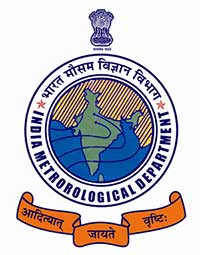Daily-current-affairs
/
14 Oct 2020
India Meteorological Department (IMD) : Daily Current Affairs

India Meteorological Department (IMD)
Why in NEWS ?
- According to India Meteorological Department (IMD) Director General Mrutunjay
Mohapatra winter could be colder this season due to the prevailing La Nina
conditions, while addressing a webinar on ‘Cold Wave Risk Reduction’ organised by
the National Disaster Management Authority (NDMA).
About
- As weak La Nina condition is prevailing, more cold can be expected this year.
- The El Nino and La Nina conditions play a dominant role considering the large scale
factor for the occurrence of cold wave conditions.
- La Nina conditions are favourable for cold wave conditions, while El Nino conditions
are unfavourable for it.
- There should not be an impression that climate change leads to rise in the
temperature, but on the contrary, it leads to erratic weather
Most Affected Areas
- Rajasthan, Uttar Pradesh and Bihar are among the states that mostly see deaths due
to cold waves.
India Meteorological Department (IMD)
- Formed in 1875, the India Meteorological Department (IMD) is the national
meteorological service of the country and it is the chief government agency dealing
in everything related to meteorology, seismology, and associated subjects.
- The administrative responsibilities of the Department are under the supervision of
the Ministry of Earth Sciences of the Indian Government.
- The IMD is headquartered in New Delhi.
- The IMD also releases a winter forecast every year in November which gives
predictions on the severity of the winter season starting December to February.
La Nina and El Nino
- El Nino and La Nina are opposite phases of what is known as the El Niño-Southern
Oscillation (ENSO) cycle.
- The ENSO cycle is a scientific term that describes the fluctuations in temperature
between the ocean and atmosphere in the east-central
Equatorial Pacific.
- Phenomenon of warming of the ocean surface, or above-average sea surface
temperatures (SST), in the central and eastern tropical Pacific Ocean is known as El
Nino. The low-level surface winds, which normally blow from east to west along the
equator (“easterly winds”), instead weaken or, in some cases, start blowing the
other direction (from west to east or “westerly winds”). This reversal of winds
creates unusual warming and low pressure near the Peruvian Coast, and causes
heavy rainfall.
- La Nina is sometimes referred to as the cold phase of ENSO and El Nino as the warm
phase of ENSO. These deviations from normal surface temperatures can have large-
scale impacts not only on ocean processes, but also on global weather and climate,
including India. This situation causes heavy rainfall (monsoon) on western Pacific
areas.
Effects of El-Nino and La-Nina on India’s climate
- For India, El Nino during winter results in development of warm conditions.
- During summer, it leads to dry conditions and deficient monsoon, leading to
droughts and water scarcity.
- Whereas La-Nina brings rains and stronger monsoon in India, it may cause flood like
situation in coastal areas.
- El-Nino and La-Nina are complex unpredictable phenomenon and Agriculture being
the important occupation, climatic changes due to these are grave for India







